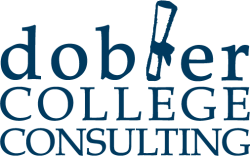Answering Your Questions About The FAFSA
 Now that January has arrived, it’s time for high school seniors and their parents to fill out the FAFSA, or Free Application for Federal Student Aid. The FAFSA is the form you are required to fill out if you want colleges to consider you for financial aid.
Now that January has arrived, it’s time for high school seniors and their parents to fill out the FAFSA, or Free Application for Federal Student Aid. The FAFSA is the form you are required to fill out if you want colleges to consider you for financial aid.
While families have their own unique circumstances, here are some of the top questions I come across this time of year and my answers which will hopefully help you along the way as well.
1. We make too much money, we probably shouldn’t bother filling out the FAFSA, right?
Wrong. Regardless of how much (or how little) you make, you should always fill out the FAFSA. Even if your EFC is very high, there are still non-need based loans like the Direct Unsubsidized Loan or Parent PLUS Loan which can help you spread out the costs. But, to qualify you must fill out a FAFSA.
2. How do parents who have joint custody and are both remarried with new spouses file the FAFSA??
When students come from divorced families, financial aid eligibility is based on the income and assets of the custodial parent. This is the parent who the student lives with for the majority of the year, even if it’s six months and one day. Even if the non-custodial parent has a considerably higher salary than the custodial parent, this parent’s income and assets are not factored into the federal financial aid eligibility calculation.
3. We’re going to have two kids in college at the same time, how will this affect our financial aid eligibility?
How many kids you have in college at the same time has a very big impact on financial aid eligibility. Consider that your EFC is divided by the number of children enrolled in college. If you have one child in college and your EFC is $40,000, then that’s what colleges would expect you to pay. If you have two kids in at the same time, the EFC will be $20,000 each. This is why it’s also important to file a FAFSA each year. Even though you may not get a lot with one child in college, if you have a second one entering a year or two later, you may end up qualifying for something.
4. We won’t have our taxes done until late March, can we just apply for financial aid then?
You can, but you shouldn’t. Financial is aid is very much a first-come, first-serve process. Additionally, some states like Connecticut have February deadlines for state grants which you don’t want to miss. If you wait until after you file your taxes, colleges won’t have as much money to give out as they would have if you had applied in January. File your FAFSA now with estimated income and then use the federal data retrieval tool after you file your taxes to update your information.
5. My daughter’s grandfather has put away money in a 529 for her which we plan on using this year. Since it’s his money and not ours, do we have to report it on the FAFSA?
Yes, you have to report any distribution from a 529. The more important factor here is that the 529 is owned by a grandparent and, therefore, may reduce your aid eligibility considerably. Where a distribution from a 529 owned by either parent is considered a parental asset, a distribution from a 529 owned by someone who is not the parent is considered student income. When calculating aid eligibility, student income and assets are assessed at a much higher level than parental assets so even though the intention is a good one, the outcome may not be helpful.
If you want some help and guidance on your college application and financial aid process, check out what other families are saying about Dobler College Consulting and then contact me today to set up an appointment for a free consultation.




